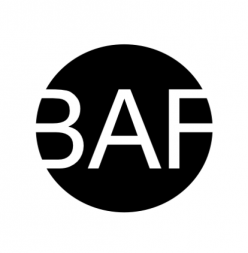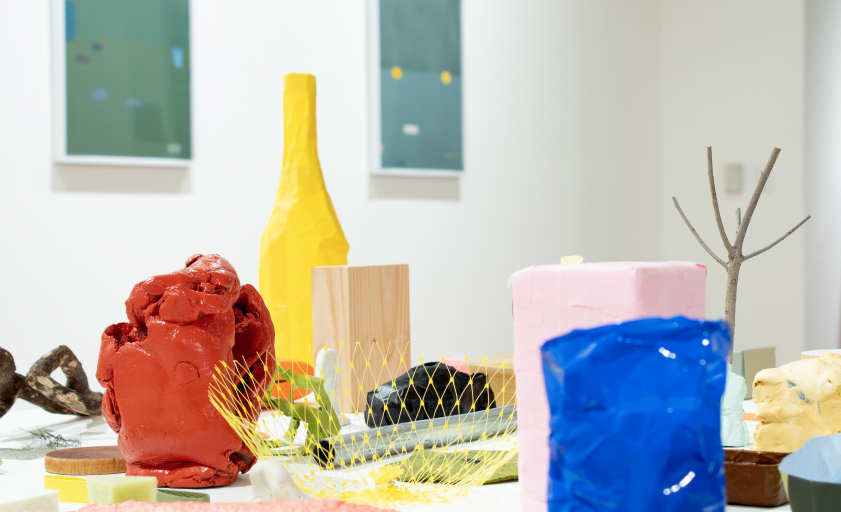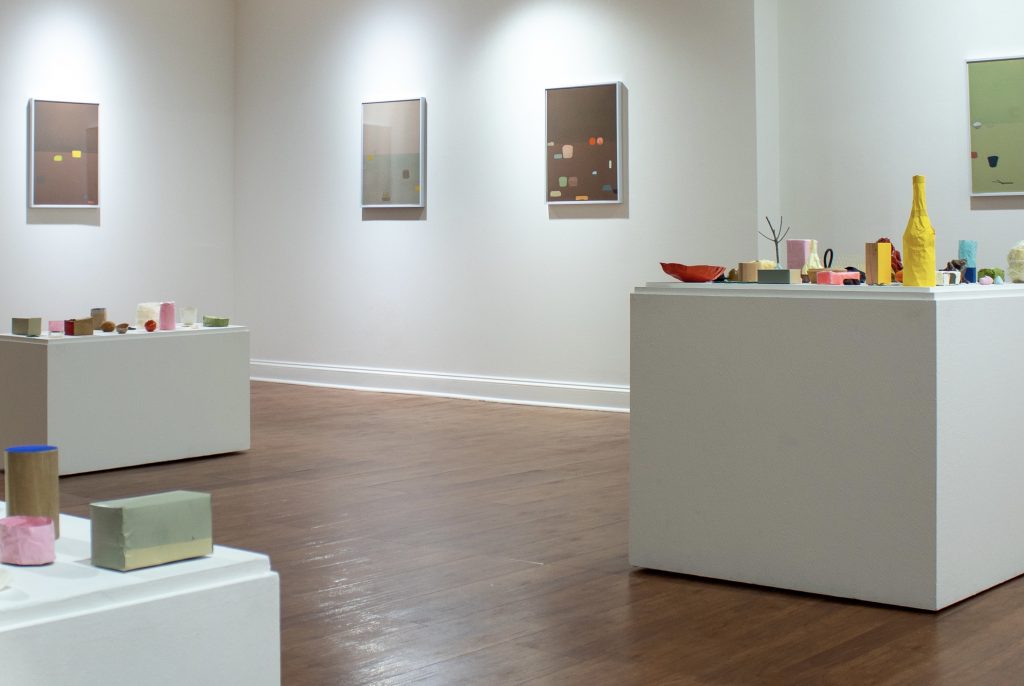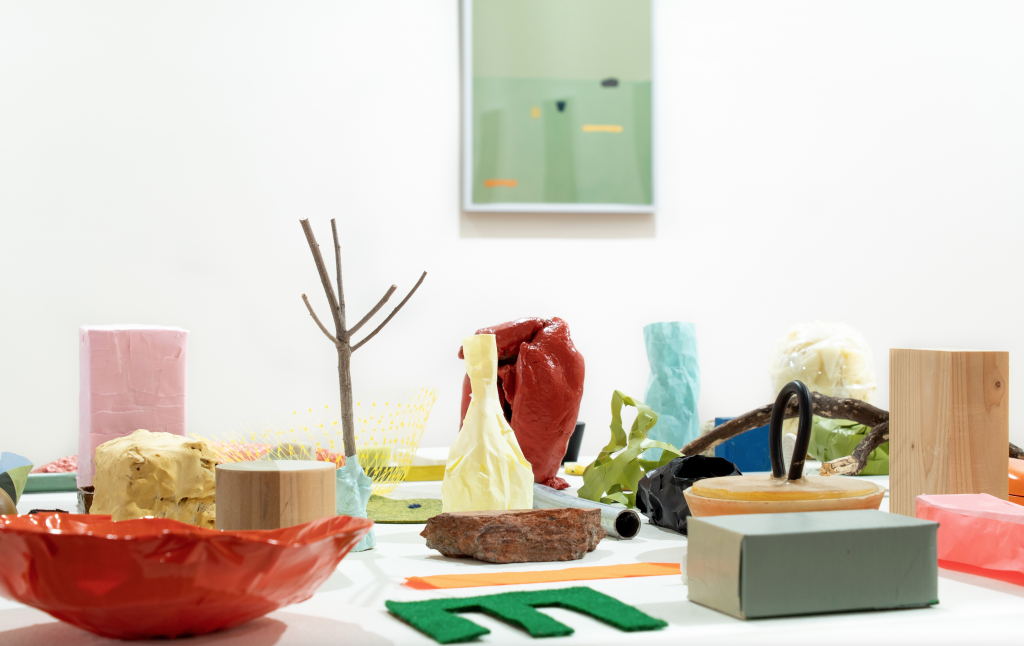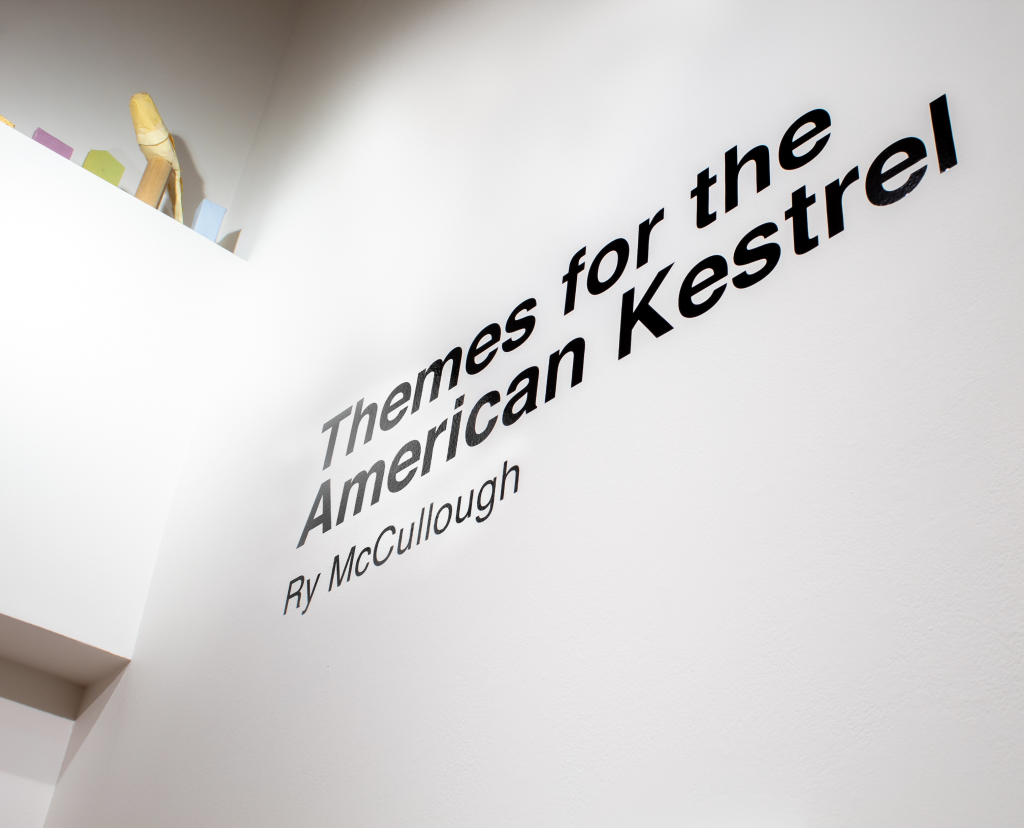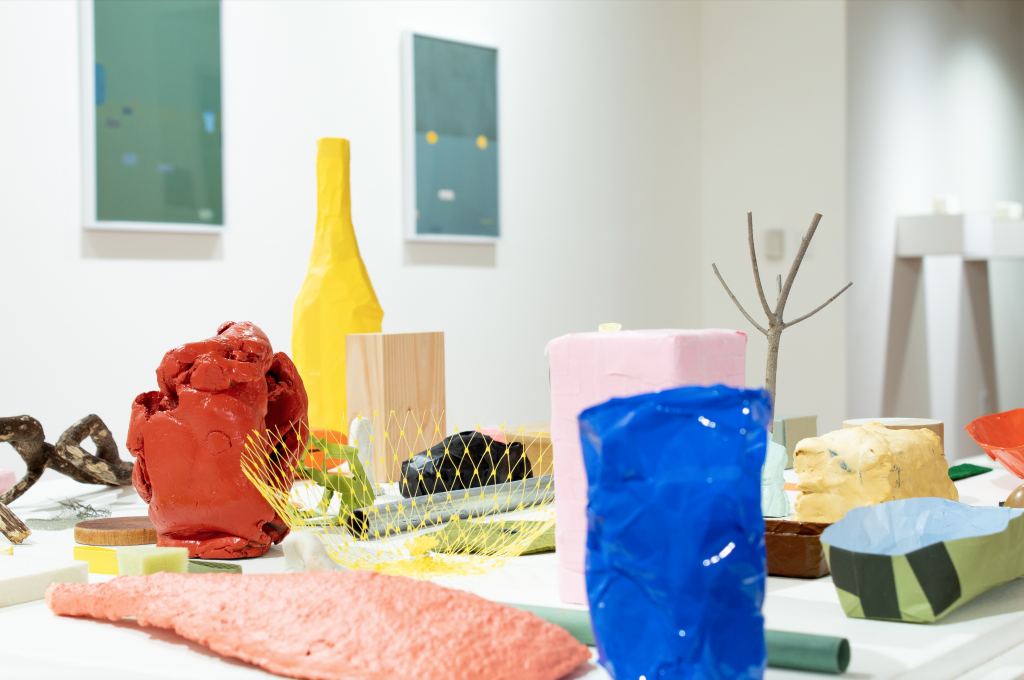2025 MFA Thesis Exhibition
University of South Florida Contemporary Museum of Art
April 4 – May 10, 2025
By Tony Wong Palm
Current world population is 8.2 billion; and an intrepid percentage of these humans have chosen the artist’s path.
Six of these in particular have an exhibition at USF CAM (University of South Florida Contemporary Art Museum in Tampa, Florida).
The exhibition’s self declared title, “Thank You in Advance, 2025 MFA Thesis Exhibition” tells of these artists at a threshold propelling them beyond their academic studios.
The six artists are: Jocelyn Chase, Olin Fritz, Adrian Gomez, Michael Lonchar, Emily Martinez, and Tom Rosenow.
A fully illustrated exhibition catalogue accompanies the exhibition with an in-depth profile on each artist by the international and independent art critique, journalist, and lecturer, Laurie Rojas.
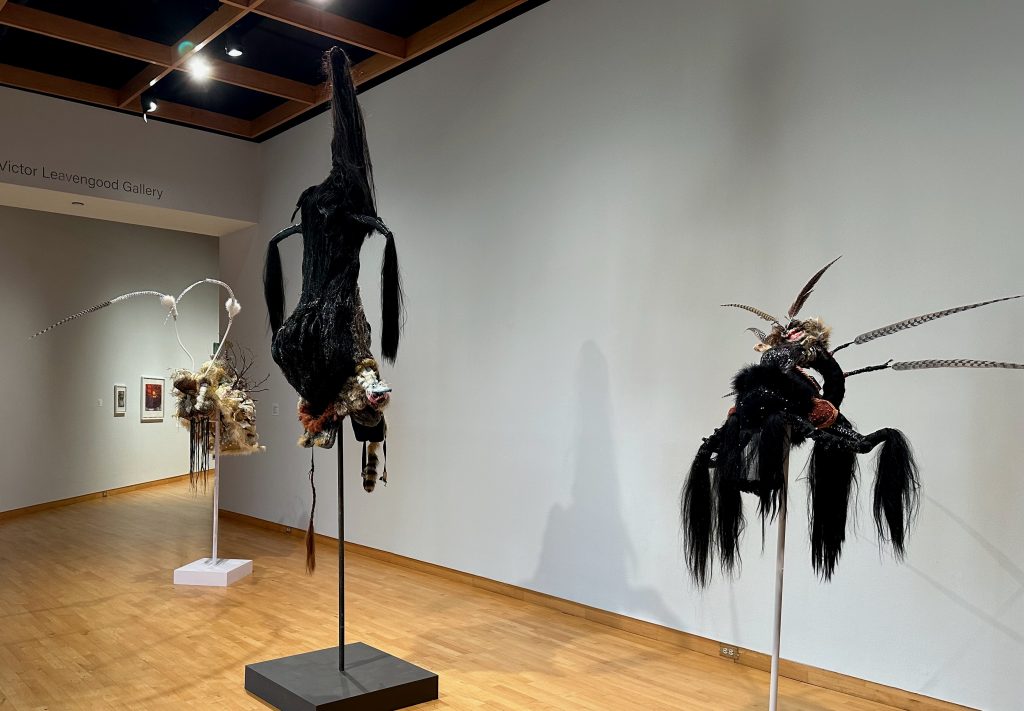
Visitors are met with bizarre assemblages upon entering the museum. Maybe even alien, they’re headdresses, perhaps for ceremonial rituals of people anthropologists have yet to discover; or costumes for a fringe festival performance; or even for a contemporary interpretation of the 1967 broadway musical “Hair” – from a generation way before the artist was even born.
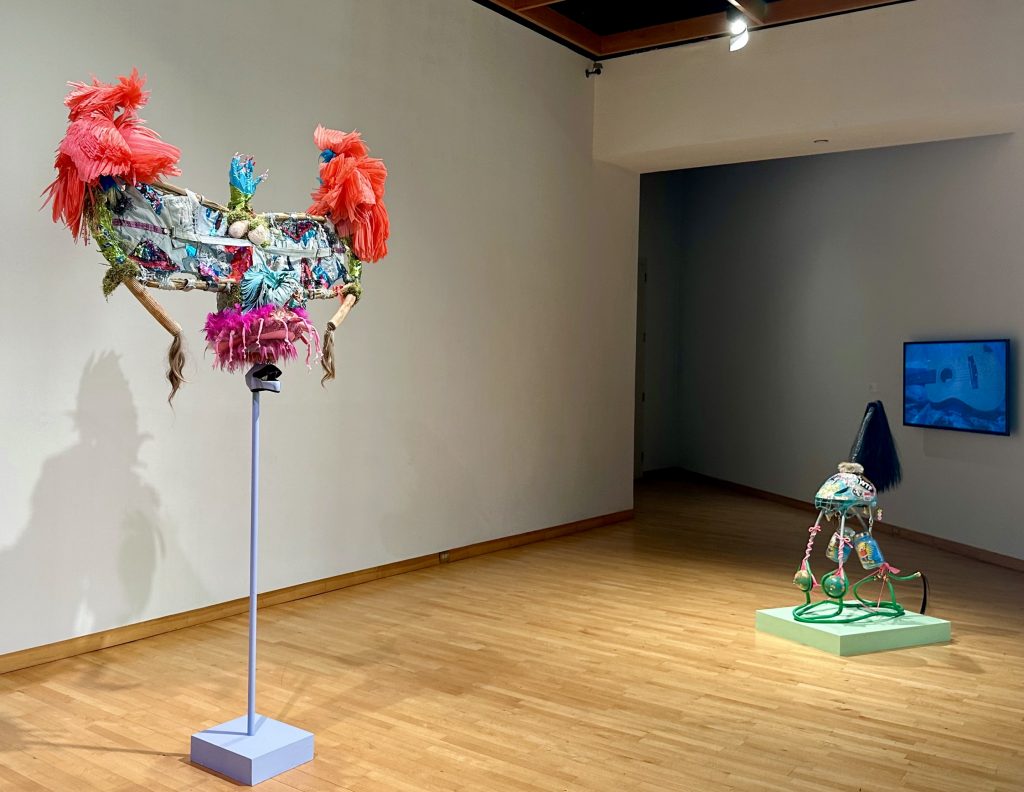
There are seashells and other ocean flotsam, feathers, fabric, eyeballs, taxidermy parts, teeth, hair, latex gloves, foam…to name a few items in the menagerie list of miscellaneous matter, with mysterious gobs and strands that are precariously built, stuck together, and mounted gravity defying on spindly stands.
Each one, there’re five of them by Olin Fritz, is captivating, detailed, front to back, side to side, up to down to underneath; they’re fun, dangerous, or frightening, depending on the occasion in which they are deployed.
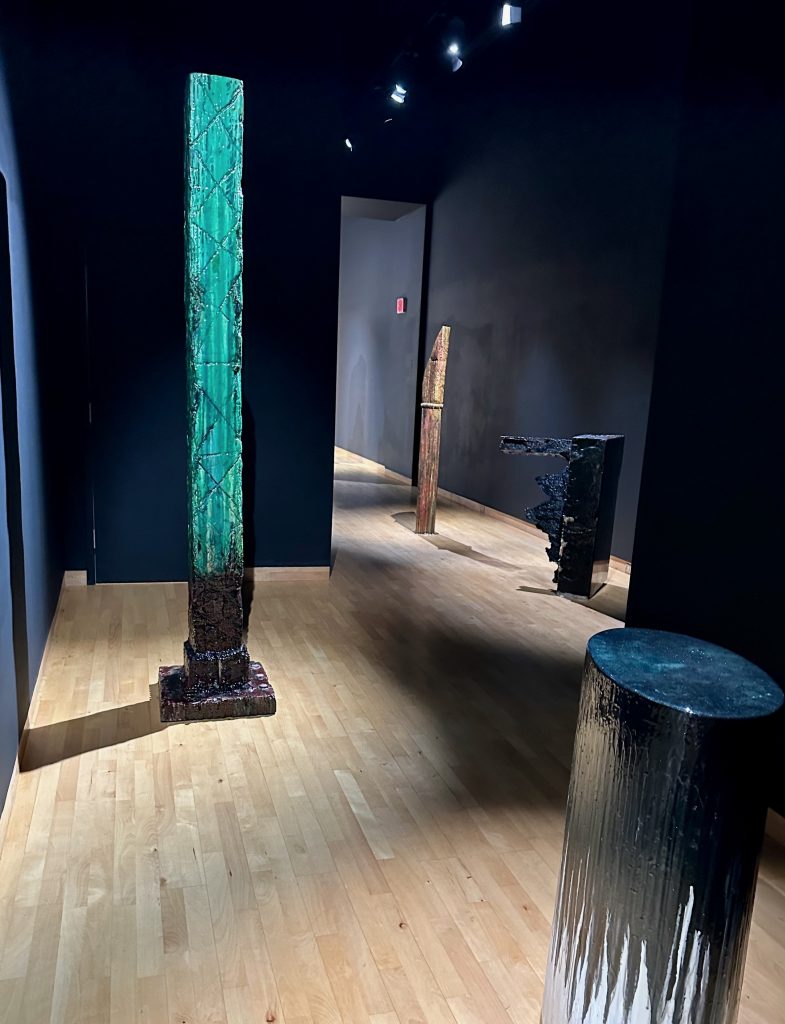
Another strangeness waits on the other side of the museum. A corridor space, painted dark and tunnel like is where Jocelyn Chase’s dramatically lit formations and monoliths rise up from the floor and jutting out from the wall.
Reminded me of going caving in West Virginia hills where only light is from our head lamps. Navigating Chase’s installation like traversing those damp underground caverns filled with other worldly shapes and forms, each colored and textured from eons of mineral buildup; except in Chase’s formations are of industrial stuff – fiberglass, styrofoam, and layered with resins, enamel and automotive paint, shredded tires, felting, marble dusts…all filtered through generations of human existence.
An experience far from childhood stuffed animals, yet intriguing, sitting in the dark contemplating these aggressive structures from the Anthropocene Age.
Intersecting these two spaces are CAM’s East and West Galleries. Looking from an architectural plan view, one could draw out lines crossing these four spaces creating a compass, appropriately representing points in these artists’s journeys ahead, with all the symbolic and mythic meaning the cardinal directions imply.
In this compass configuration, Fritz’s entry space would point North and Chase’s cave space, South. In the East Gallery (now named Lee & Victor Leavengood Gallery) are artists Michael Lonchar and Tom Rosenow; and the West Gallery are artists Adrian Gomez and Emily Martinez.
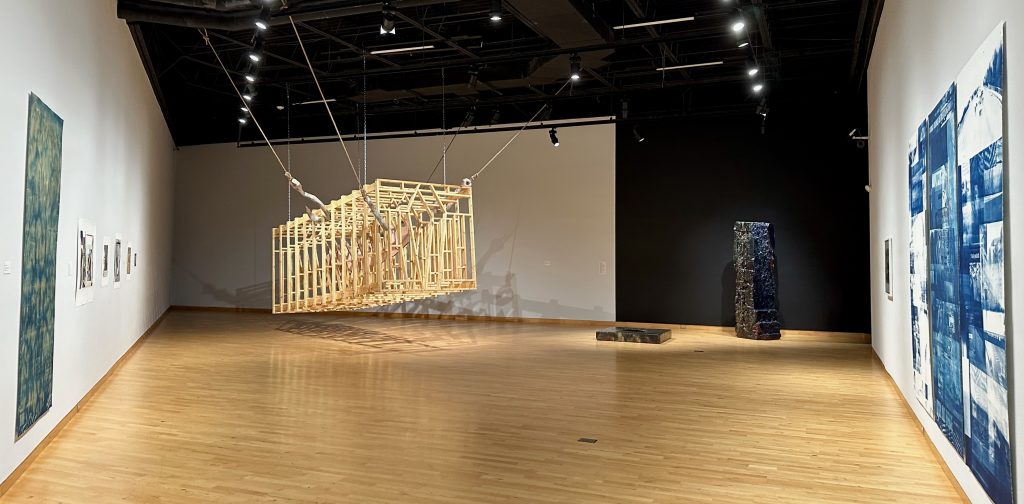
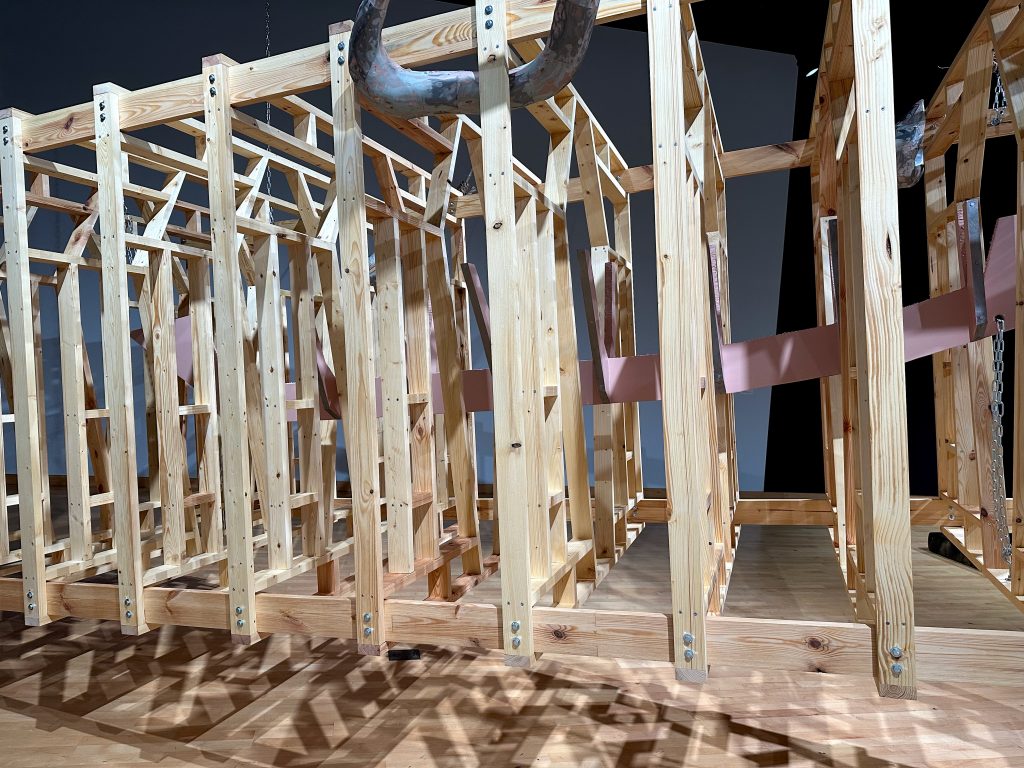
Looking east, suspended in the middle of the gallery is Michael Lonchar’s singular “Gone Fishing, Out for a Swim”. Hung at an incline, chains and giant cartoonish hooks grapple a structure in what might be in the framing phase of construction.
There’re twelve identical 2×4 pine frames connected like pages of a pop-up book opening, stretching out. A coffin shape, a memento mori void extending through the center of each page, with what resembles the hull of a boat suspended within.
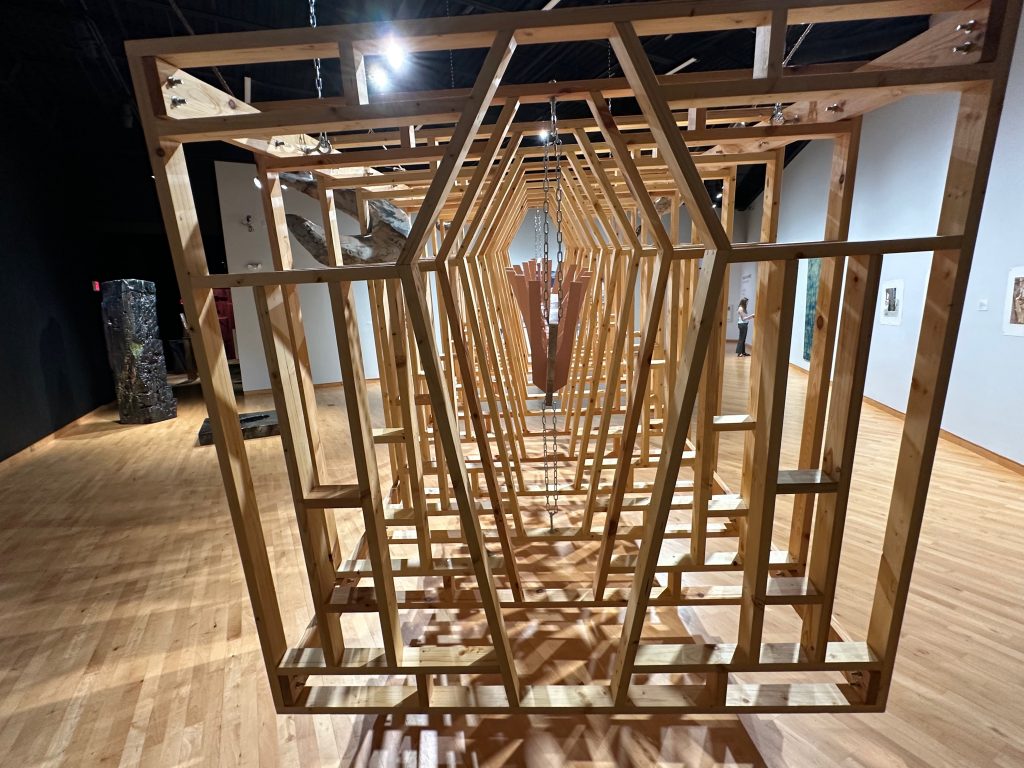
This whole rectangle structure could be an apparatus for philosophical inquiry. It is a telescope looking up from one end to a boundless vastness; viewing down from the other direction becomes a microscope searching the quantum foundations of this existence; and from the sides are segmented views of the boat hull floating somewhere between these extremes of scale, between beginnings and endings, between birth and death.
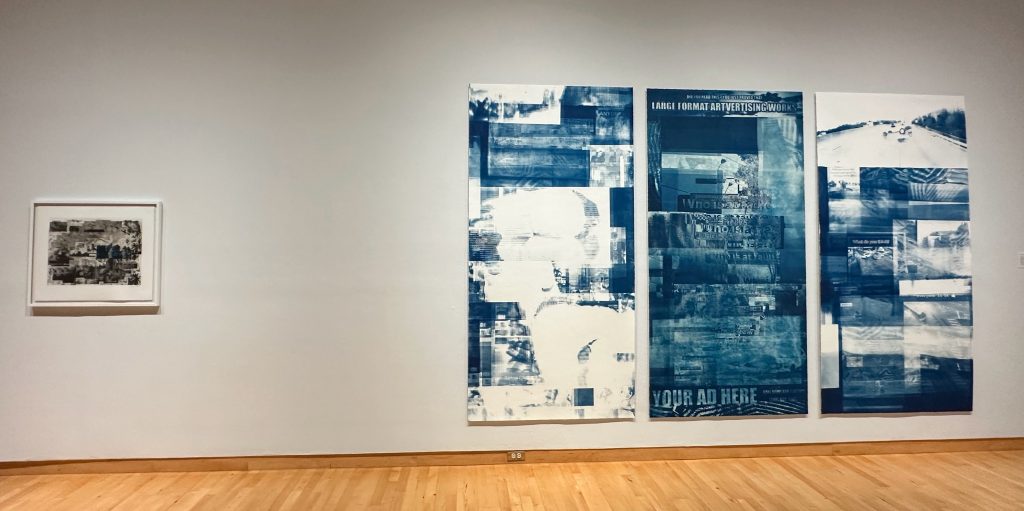
Tom Rosenow’s printmaking prowess surrounds Lonchar’s two-by-four geometry. Massive cyanotypes dominating one side of the gallery, and another anchoring the opposite side, his thirteen prints, a mixture of traditional and modern print making techniques, draw a linear landscape around the gallery walls.
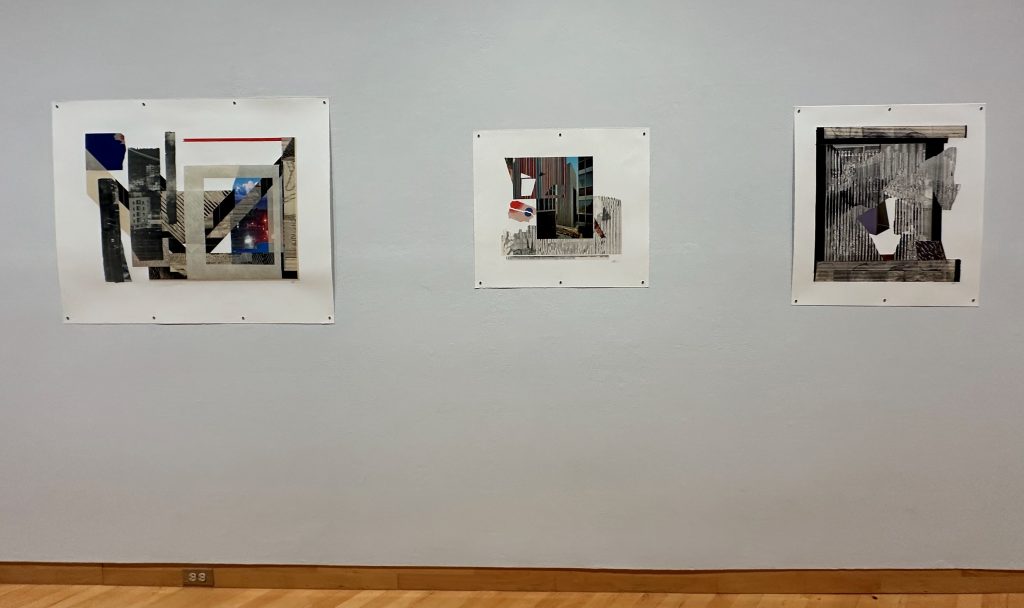
Rosenow’s works, collapse and condenses images sourced from the digital world of social media that inundates many of our lives. He captures the relentless barrage of images and video stills and curates into compositions for possible longer internal reflections.
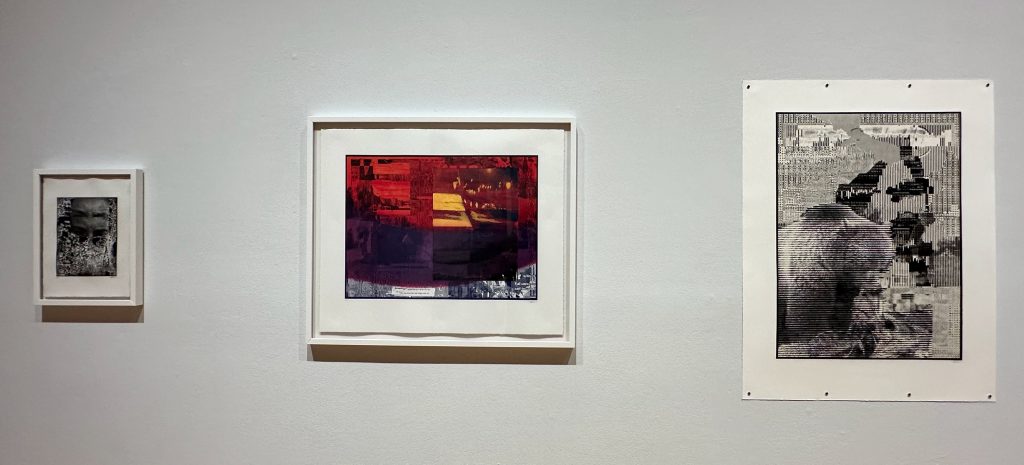
The internet with its speed and reach may be unique to this current time, but the gathering and spreading of thoughts, ideas, discoveries, inventions – culture in general, have always migrated with humans around this planet. Setting precedence was Japanese ukiyo-e block prints in the 17th century with their popularity that even influence a distant artists like van Gogh is one example.
Rosenow merging technologies from different eras into one collage moment to tell age old stories of human elegance and foibles is another example.
Only three works in the seemingly sparse West Gallery, but their monumentality and dense complexity confidently fills the space, one anchoring the floor and the other holding up the walls. A note on continuity: Prior to this exhibition, in early 2025, CAM hosted X Factor: Latinx Artists and the Reconquest of the Everyday. What is now in this gallery could be a progression of that.
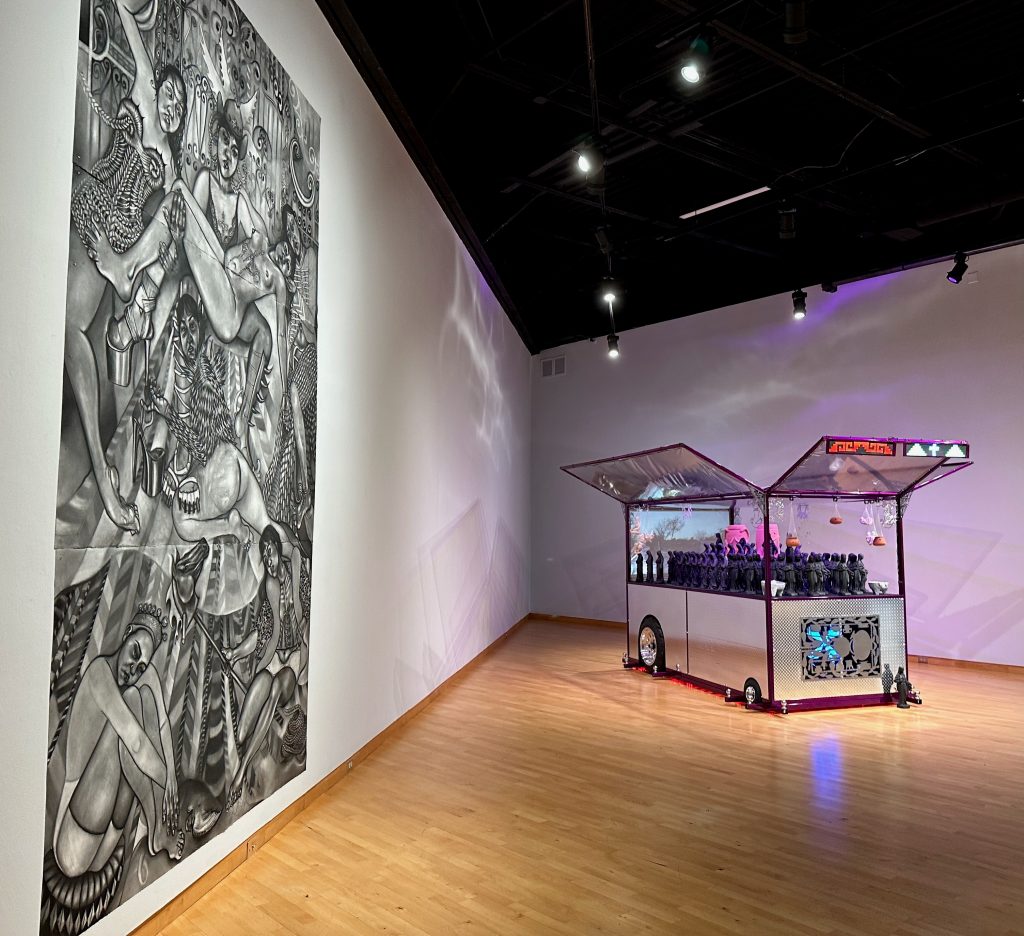
Parked on the floor is Adrian Gomez’s giant mobile street vendor cart, “Bisagras” as it says on the exhibition signage, though the exhibition catalogue titled it “Ni de aquí, ni de allá”. One translates as “hinge”, and the other “not from here, not from there”. This duality might express Gomez’s pivotal identity and intensions of his art.
With LED’s running and side awnings open, the cart is loaded with “merchandise” ready for market. Religious statuettes lined up in rows, indigenous pots, Mexican style mortars filled with various ingredients. Interestingly, a number of articles have been written on museums being the contemporary sacred space, inheriting roles churches used to provide as a place for quiet contemplation, reverence for the objects within, and potential transcendence experiences. Gomez’s cart of religious statutes and secular objects playing a double role?
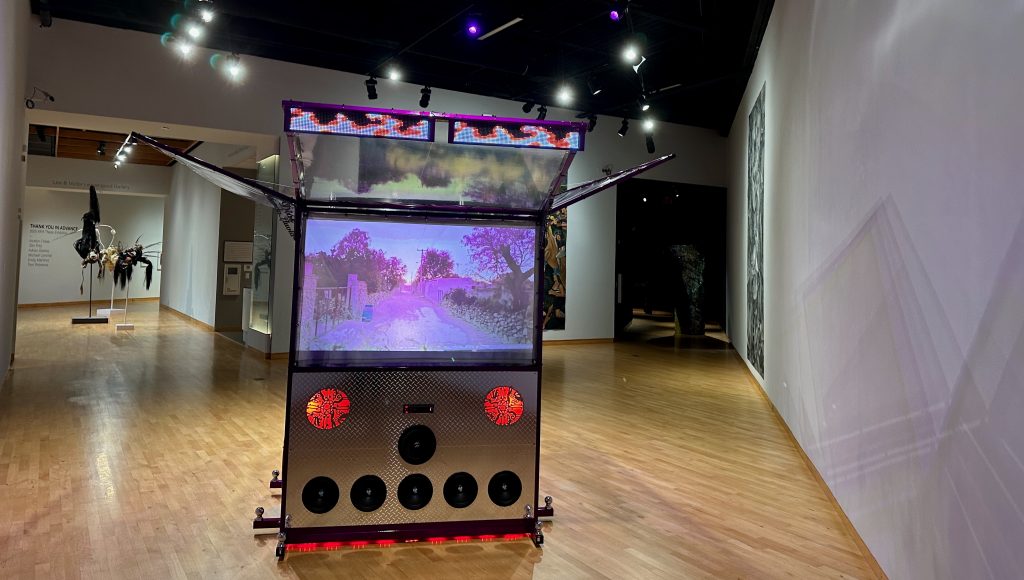
There’s also a film projecting on the back awning following a drive around dusty dirt roads through ranch or farm country; and the sets of towing ball hitches on every side, presenting a conundrum on how this cart can be pulled, and more importantly, which direction.
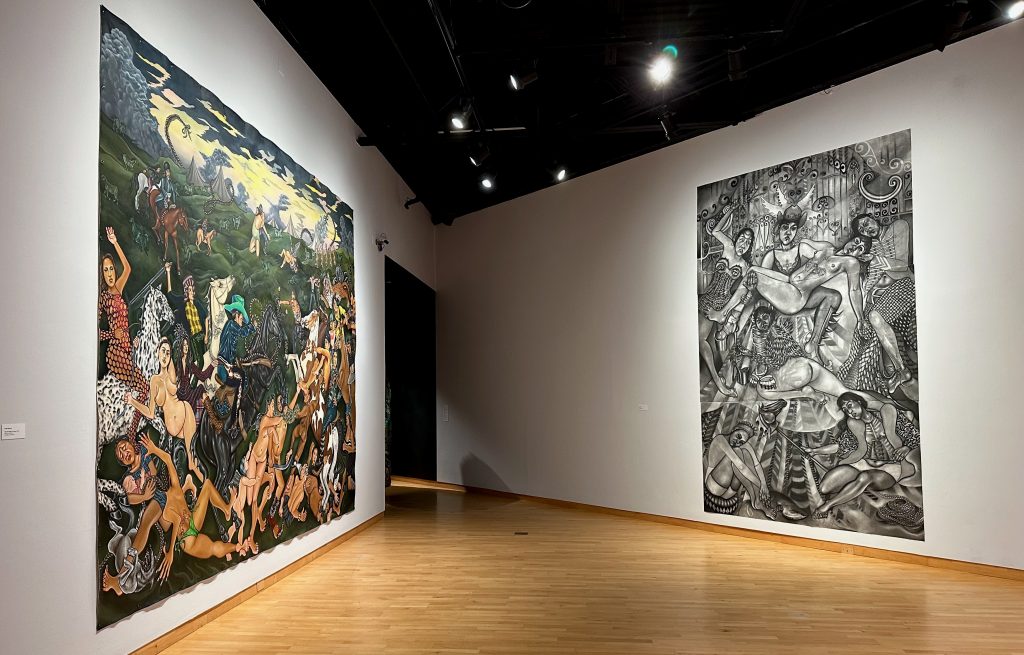
Emily Martinez’s two massive works, “Pieta”, a charcoal drawing on paper; and “the soft edge of a sword”, an acrylic on canvas painting; references old masters use of imageries, symbolisms, figures, and hierarchical compositions speaking to this contemporary world.
“Pieta” recreates a religious theme that a number of artists have depicted with Michelangelo’s version being the most famous. There’re seven figures in Martinez’s interpretation, with herself playing each role, and the Virgin Mary here wears a cowboy hat. Her own Cowboy Carter.
The “the soft edge of a sword” is commanding, a clash of circus characters in costumes charging each on unique breeds of horses while an array of bodies, characters and creatures in both foreground and distant fantastical landscape, Hieronymous Bosch-esque, playing out allegorical scenes of love, struggles, cautionary tales…
No doubt many challenges building up to this exhibition, and the brilliant job of installation, which unfortunately has such a short schedule. But it is a grand send-off, and will be interesting to follow each artist’s progress – their hero’s journey.
As part of their exhibition program, CAM creates a self guided virtual tour of every exhibition, in part as a documentation record, and in part for outreach. It’s nice to be able to view the exhibitions from other parts of the world, or even after their closing. Here’s the link to the on-line virtual tour for this exhibition: https://cam.usf.edu/CAM/exhibitions/2025_04_MFA2025/MFA2025.html
A digital version of the Thank You in Advance 2025 MFA Thesis Exhibition catalogue is also available for downloading at the same link.
About the author:
A multi-talented artist, designer and writer, Tony Wong Palms has exhibited locally and also writes for Creative Pinellas Magazine. He is the former Exhibitions Coordinator/Designer at the University of South Florida Contemporary Art Museum in Tampa, FL. All photographs courtesy of the author.
